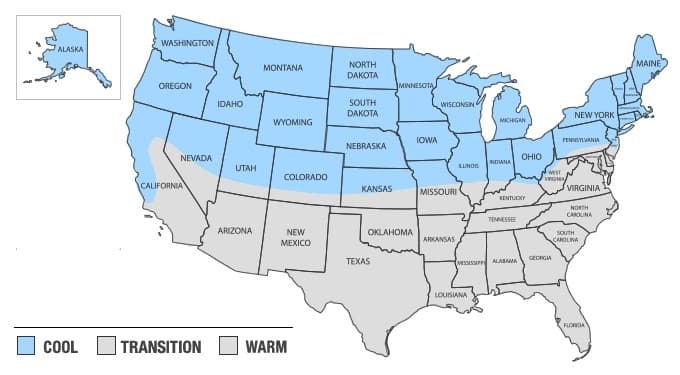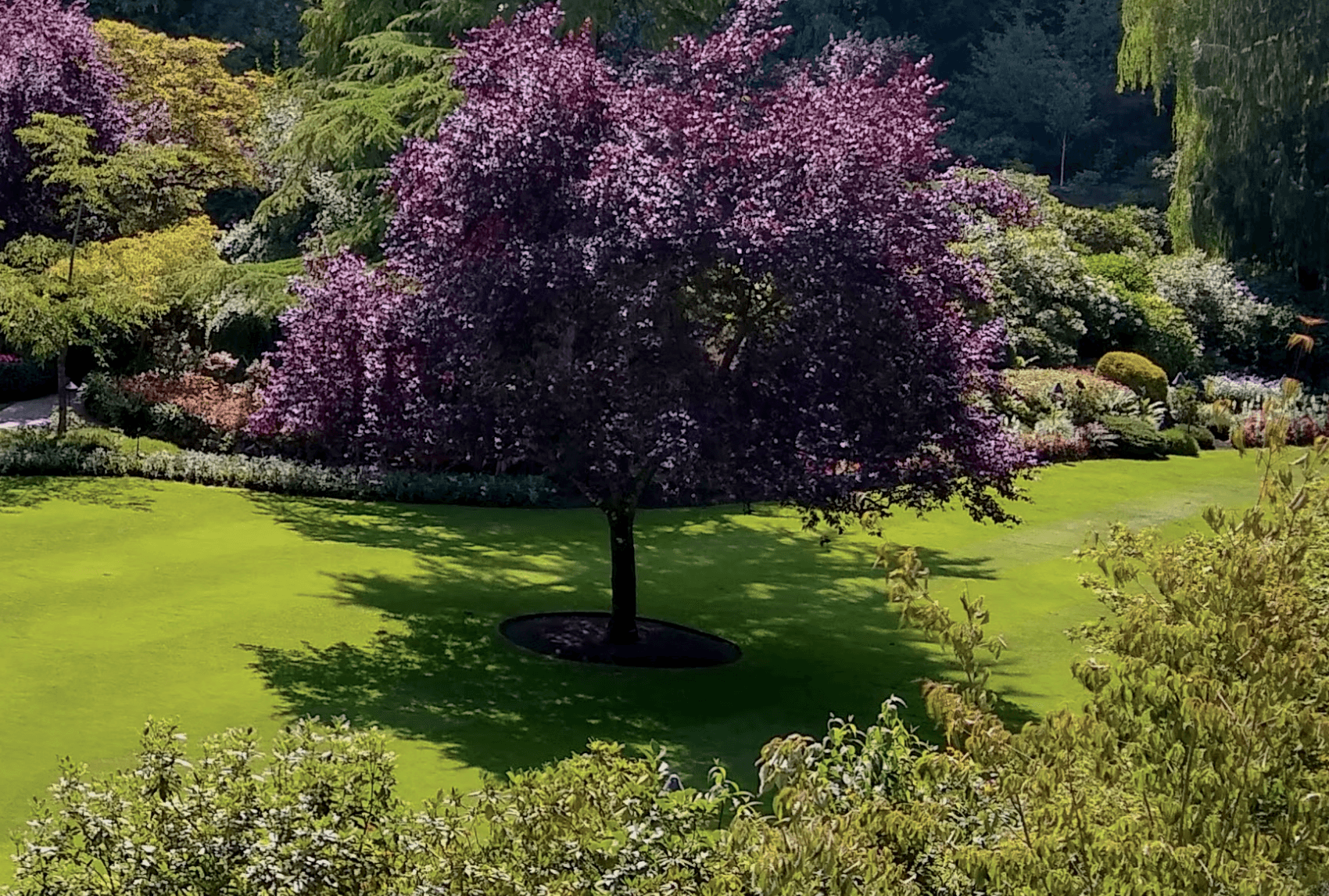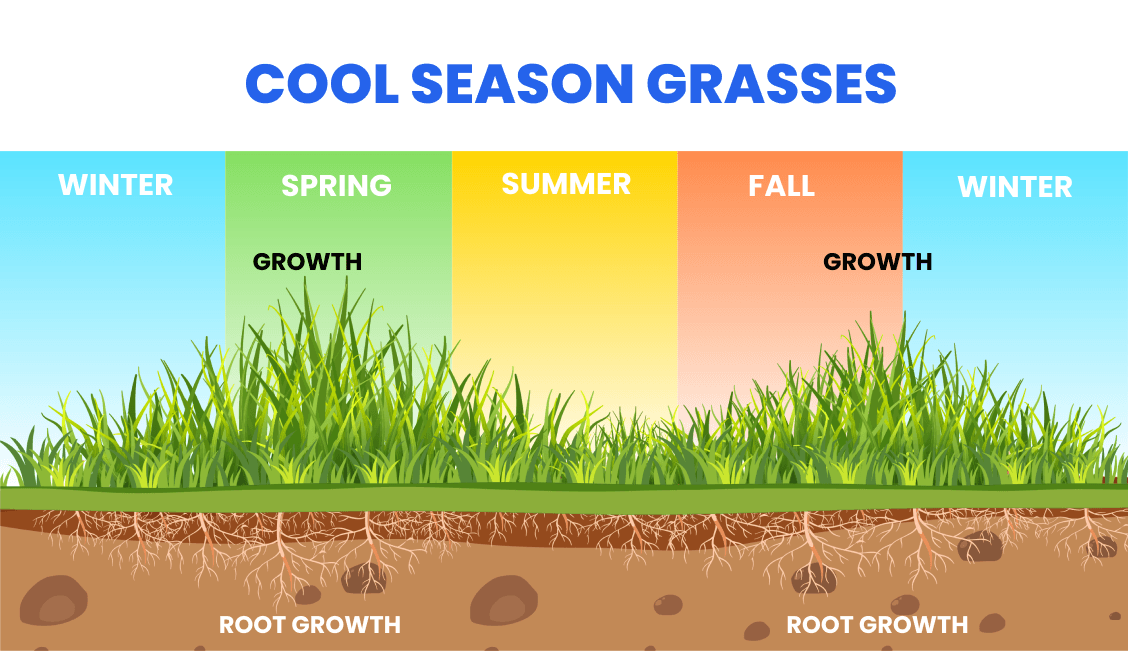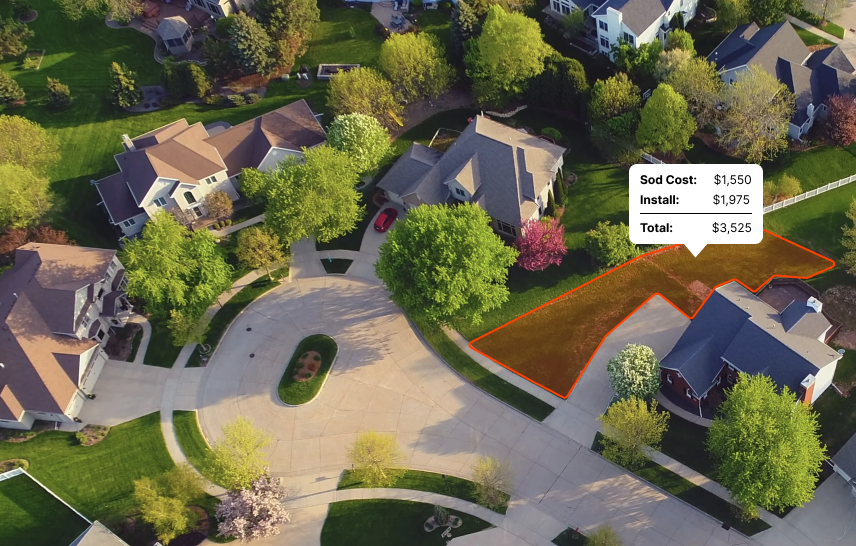This zone is characterized by cool-season grasses, which are best suited for the climate. These grasses grow best in temperatures between 60 and 75 degrees Fahrenheit and can handle freezing temperatures during the winter.”
Introduction
Rhode Island has a humid subtropical climate with warm summers and cool winters. This type of climate affects the types of grass that are best grown there.
Generally, cool-season grasses thrive in this climate, such as Kentucky bluegrass, perennial ryegrass, and tall fescue. These grasses can handle the cool winters and hot summers that Rhode Island experiences.
The best time to lay grass in Rhode Island is during the fall or spring seasons. The cooler temperatures and increased rainfall during these times of year create optimal growing conditions for grass.
It's important to avoid laying grass during the hot summer months, as the high temperatures can cause the grass to struggle to establish itself. Rhode Island is located in the Northeast grass zone, which means that it experiences long, cold winters and short, mild summers.
What are the best sod types for RI?
In the world of landscaping, not all grasses are created equal. Each thrives in a specific climate zone: cool, warm, or transition.

Rhode Island, with its cool season climate, prefers a particular set of grasses that relish the lower temperatures. The following sods are the easiest to grow and maintain in Rhode Island:
While it's possible to grow grasses meant for other regions with proper care, attention and timing, these are the most common grasses in Rhode Island for residential lawns.
Level Up Your Lawn Skills
Once per week we'll send you an interview from someone who has mastered the art of lawn care.
Recommended species for shade
Alright, let's get down to business – when it comes to those Rhode Island lawns living on the shadier side of life, we've got a few superstar grasses that can steal the show.
Numero uno, meet Fine Fescue. This cool season grass thrives in as little as 4 hours of sunlight daily. Cool you say? Indeed, it prefers temperatures between 60 and 75 degrees Fahrenheit. It's like the Goldilocks of grass – it doesn’t want too much sun, but it also doesn’t want to be stuck in the cold. Plus, it's water-efficient and can endure heavier foot traffic. Fine Fescue is your friend if you want a low maintenance, shade-loving lawn.
Second in line, the resilient Ryegrass. Now, the Perennial Ryegrass adores a dappled-sun patch and can endure a solid 6 hours of sunlight. This grass is known for its quick germination rate and forms a beautifully dense lawn. It’s not a diva when it comes to temperature either; it stands up to Rhode Island’s weather like a champ.
Lastly, let's shine a dim light on Kentucky Bluegrass. This guy is versatile; it's not just a sun-loving soul, but it can manage in moderately shaded areas too. Six to eight hours of sunlight is its jam. When allowed to grow to its preferred height of about 2-2.5 inches, it performs better in the shade. It's like the rockstar of grasses that changes its performance based on the venue. Kentucky Bluegrass also rocks a mean 'winter survival' skills, perfect for Rhode Island’s climate.
So there you have it. A trifecta of what we'd call Rhode Island’s shady superheroes. These guys have got the goods to take your lacklustre shaded lawn to lush and lively. Remember, though, keep them hydrated, keep them happy. No grass likes to be left in the dry. Now let's move on.

Recommended for full sun or partial sun
Choosing the right sod for your lawn depends heavily on the sunlight exposure in your yard. Different grass types have varying light requirements for optimal growth and appearance. Assessing whether your lawn receives full or partial sun is essential in selecting sod that will flourish and stay healthy in your specific environment.
Below are some sod options recommended for either full sun or partial sun conditions in RI:
| Grass Type | Sun | Good to Know |
|---|---|---|
| Tall Fescue | Partial | Tall Fescue is adaptable to a range of conditions, including partial sun, and is known for its deep root system and tolerance to drought. |
| Kentucky Bluegrass | Full | Kentucky Bluegrass prefers full sun and is prized for its fine texture, rich color, and ability to recover quickly from damage. |
| Perennial Ryegrass | Full | Perennial Ryegrass thrives in full sun and is known for its rapid germination, fine texture, and bright green color. |
| Fine Fescue | Partial | Fine Fescue is well-suited for partial sun and is appreciated for its fine texture, shade tolerance, and low maintenance requirements. |
What varieties stay green year-round?
As with anything agriculture related, there is some nuance to this question. There are many grasses that can stay green year round in but it depends heavily on your location within Rhode Island as well as any microclimates that may exist.
The following grasses have the ability to stay green year round in Rhode Island:
| Grass Type | Caveats |
|---|---|
| Tall Fescue | It typically stays green throughout the year in milder climates, given that it isn't overly stressed by heat or drought in the summer. |
| Kentucky Bluegrass | It can retain its green color for much of the year when well-maintained, though harsh winter temperatures can push it towards dormancy and a browner hue. |
| Perennial Ryegrass | It can stay vibrant and green throughout the year in many climates, unless conditions are extremely cold or dry. |
| Fine Fescue | It keeps its green color throughout the year in ideal conditions. If the winters are particularly harsh, it may lose some color. |
What is the best time to lay sod in Rhode Island?
Since it is considered a cool-season location, the ideal time to lay sod is in early spring or early fall. These periods offer moderate temperatures, leading to less stress on the sod and providing optimal conditions for root establishment before extreme temperatures of winter or summer. Avoid the summer, as high heat can stress the sod.
As you can see in the image below, you'll notice the most shoot growth (the grass above ground) and root growth in the spring and fall for cool season grases:

Find reputable companies for installing sod in RI
Here are the top problems you'll face when trying to get sod installed by a landscaping company:
- They're not transparent about pricing. You'll often get a quote that's way higher than you'd expect.
- They're hard to get ahold of on the phone or you'll reach out online but won't hear back.
- It's hard to pin them down for a specific date. Because you can only bring sod from the farm when there's decent weather, this causes some delays at times. It also has a short shelf life, so it's important to get it installed within a day or two of delivery.
We've done all the work for you. Click below to get a quote from one of the top installers in Rhode Island.

